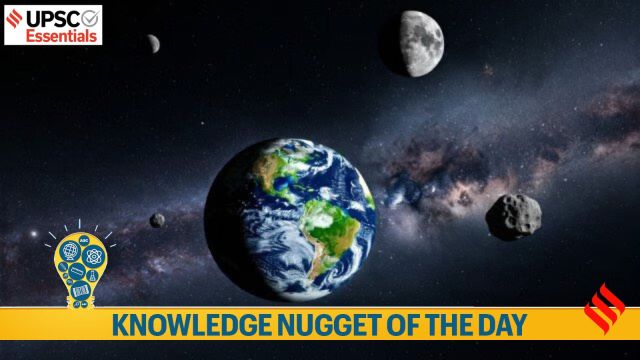
Key Takeaways :
1. Mini-moons are asteroids that fail to escape Earth’s gravity and end up orbiting the planet for some time. They are usually very small and hard to detect.
2. 2024 PT5 is Earth’s fifth detected mini-moon, also known as a Near Earth object (NEO). The first mini-moon, 1991 VG, was spotted in 1991.
3. The 2024 PT5 was discovered with the help of the NASA-funded Asteroid Terrestrial-impact Last Alert System (ATLAS).
4. The mini-moon, in its infinite universal journey, is said to have escaped from the Arjuna asteroid belt. The Arjuna asteroid belt is a secondary asteroid belt made of space rocks that follow orbits very similar to that of Earth, at an average distance from the Sun of about 150 million kilometers.
5. The mini-moon 2024 PT5 is said to be roughly 10 meters (33 feet) in diameter and won’t be visible to the naked eye, and can only be spotted using special telescopes.
Story continues below this ad
6. While getting a “mini-moon” is not new for Earth, the phenomenon is rare. Every year, many asteroids pass near Earth. However, only a few are pulled in by Earth’s gravity in this way, as most of them are either too small or they travel farther away from Earth.”
7. Some researchers suggest that 2024 PT5 may not qualify as a mini-moon because it won’t complete one full revolution around the Earth. Instead, it will revolve in a horseshoe shape for around 55 days and then escape Earth’s gravitational pull without completing the full revolution.
8. The observations of 2024 PT5 will help scientists expand the knowledge of asteroids that pass close to the Earth and those that sometimes collide with it. Many asteroids contain valuable minerals and water, which companies hope to extract one day and use for purposes such as rocket fuel.
BEYOND THE NUGGET: 5 Interesting Facts about the Moon
1. Two-faced: The Moon takes the same amount of time to revolve around the Earth as it does to rotate on its axis, which is why we only ever see one side of it, called the near side. The far side is always turned away from us. This “two-faced” nature of the Moon also leads to widely varying temperatures across its surface. The sunny side can get hotter than boiling water, reaching up to 123 degrees Celsius, while the temperature in the permanently shadowed polar craters can drop to minus 233 degrees Celsius.
Story continues below this ad
2. Moon is shrinking: As its interior cools, the Moon continues to shrink. According to NASA, its diameter has reduced by more than 50 meters over the last several hundred million years.
3. The twelve moonwalkers: Between 1969 and 1972, 12 astronauts have walked on the lunar surface. This includes Neil Armstrong, Buzz Aldrin, Charles Conrad, Alan Bean, Alan Shepard, Edgar Mitchell, David Scott, James Irwin, John Young, Charles Duke, Eugene Cernan, and Harrison Schmitt. The Apollo astronauts brought back a total of 382 kilograms of lunar rocks and soil and scientists are still studying these samples.
4. Lunar resources: While the lunar landscape may be that of an empty desert, scientists believe that it contains many important resources that can be harvested for “in-situ” utilisation during space missions. These include hydrogen, which can be used to propel rockets; water ice, which can be split into hydrogen and oxygen for fuel and helium-3, a non-radioactive helium isotope that could potentially be used to provide nuclear energy in the future.
5. Moon’s Polar Regions: The polar regions of the Moon are distinct, as they are completely dark without sunlight, and temperatures can drop below 230 degrees Celsius, making equipment operation challenging.
Story continues below this ad
JUST FYI: After the success of Chandrayaan-3 mission, the designs of India’s next mission to the Moon, Chandrayaan-4 — which will bring rock and soil samples back to the Earth — has been finalised, and will most likely happen in 2027, said ISRO chairman S Somanath said on the National Space Day.
(Source: National Space Day, Earth to get a temporary ‘mini’ moon, Facts about the Moon, Why Earth will temporarily get a ‘mini-moon’)
For your queries and suggestions write at roshni.yadav@indianexpress.com
Subscribe to our UPSC newsletter and stay updated with the news cues from the past week.
Story continues below this ad
Stay updated with the latest UPSC articles by joining our Telegram channel – Indian Express UPSC Hub, and follow us on Instagram and X.


































